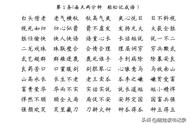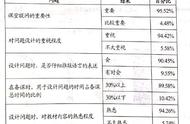今天我们一起学习英语基础语法里12个时态中的现在完成进行时。
现在完成进行时会和主动词一起使用两个助动词
The Present Perfect Continuous uses two auxiliary verbs together with a main verb.
我们如何使用现在完成进行时呢?
现在完成进行时的结构是这样的:

第一个助动词have采用与现在时对应的:have、has
第二个助动词(be)在过去分词形式中是不变的
主要动词的现在分词ing形式是不可变的(加- ing的形式)
对于否定句,我们在助动词后面加一个not。
对于疑问句,我们交换主语和助动词。
The first auxiliary (have) is conjugated in the Present Simple: have, has
The second auxiliary (be) is invariable in past participle form: been
The main verb is invariable in present participle form: -ing
For negative sentences we insert not after the first auxiliary verb.
For question sentences, we exchange the subject and first auxiliary verb.
看下面用现在完成进行时的例子:

现在完成进行时的缩写(Contraction with Present Perfect Continuous)
当我们说话中使用现在完成进行时的时候,经常会收缩主语和第一助动词。我们也会在非正式的书面表达上这样做。
When we use the Present Perfect Continuous tense in speaking, we often contract the subject and the first auxiliary verb. We also sometimes do this in informal writing.

举个栗子:
I've been reading.
Jenny's been helping us recently.
在否定句中,我们可以把第一个助动词和not缩写,举个栗子:
In negative sentences, we may contract the first auxiliary verb and "not":
I haven't been playing tennis.
It hasn't been snowing.
我们该如何使用现在完成进行时?
How do we use the Present Perfect Continuous tense?
这种时态就叫现在完成进行时时态(Present Perfect Continuous tense)
这个时态总是和现在或者目前有联系
(There is usually a connection with the present or now.)
我们使用现在完成进行时去谈论:
1. 过去的行动但现在停止了(past action recently-stopped)
2. 过去的行动现在仍在继续(past action still-continuing)
1 过去的动作刚刚停止
(Present Perfect Continuous for past action just stopped)
我们使用现在完成进行时谈论起始于过去的行为到现在停止了。对现在造成了影响或有了结果。
We use the Present Perfect Continuous tense to talk about action that started in the past and stopped recently. There is usually a result now.

举个栗子:
I'm tired {now} because I've been running.
Why is the grass wet {now}? Has it been raining?
You don't understand {now} because you haven't been listening.
2 现在完成进行时表示过去的动作持续到现在
(Present Perfect Continuous for past action continuing now)
我们用现在完成时谈论从过去开始到现在仍在持续的行动,
此时经常会与for和since连用。

举个栗子:
I have been reading for 2 hours. (I am still reading now.)
We've been studying since 9 o'clock. (We're still studying now.)
How long have you been learning English? (You are still learning now.)
We have not been smoking. ( And we are not smoking now.)
现在完成进行时中for和since的用法:
(For and Since with Present Perfect Continuous tense)
我们经常用for和since在完成时态中(We often use for and since with perfect tenses):
我们用for来谈论一段时间,比如:three hours, two months, one decade
我们用since谈论过去时间的某一点,比如:9 o'clock, 1st January, Monday
We use for to talk about a period of time: three hours, two months, one decade
We use since to talk about a point in past time: 9 o'clock, 1st January, Monday.

看下面栗子:
I have been studying for three hours.
I have been watching TV since 7pm.
Tara hasn't been feeling well for two weeks.
Tara hasn't been feeling well for two weeks.
Tara hasn't been visiting us since March.
He has been playing football for a long time.
He has been living in Bangkok since he left school.
总结
现在进行完成时有两种表达方式:
- 表过去的动作最近停止了
- 表过去的动作还会继续持续
今天分享到此为止,明天将继续学习并分享更多关于英语基础语法的学习知识,有兴趣的同学可关注本公众号【SunsetDiary】共同学习成长
本公众号均以实体书籍或互联网来源(如B站、公众号、扇贝阅读APP、得到APP等)为基础学习记录并分享给大家共同学习,不以盈利为目的。
摘抄内容如有侵权,请联系删除。
—END—
,













